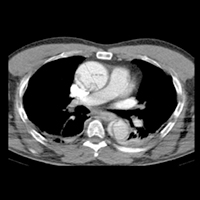A "sneaky" symptom of aortic dissection. Brief literature review, physiopathology and diagnostic tools management

All claims expressed in this article are solely those of the authors and do not necessarily represent those of their affiliated organizations, or those of the publisher, the editors and the reviewers. Any product that may be evaluated in this article or claim that may be made by its manufacturer is not guaranteed or endorsed by the publisher.
Authors
Aortic diseases cover a large spectrum of conditions, such as aortic aneurysm and acute aortic syndromes (i.e., dissections, intramural hematoma, penetrating atherosclerotic ulcer, traumatic aortic injuries, and pseudoaneurysms), genetic diseases (e.g., Marfan syndrome) and congenital abnormalities, such as coarctation of the aorta. These conditions may have an acute presentation; thus, if the acute aortic syndrome is the first sign of the disease, the prognosis is extremely poor. Prompt diagnosis and timely therapy are therefore mandatory. In this paper, we discuss a deceptive symptom of painless aortic dissection and its physiopathology. Furthermore, we briefly review the literature and discuss the management of diagnostic tools.
How to Cite

This work is licensed under a Creative Commons Attribution-NonCommercial 4.0 International License.







